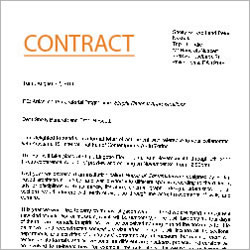
FEARING BACKLASH, ARTISSIMA CANCELS ARTE POVERA EXHIBITION
TURIN (October 11, 2011)—The founding ethos of arte povera was turned on its head last week, when the Turin-based contemporary art fair Artissima canceled an exhibition that it had commissioned for its November 4 – 6, 2011 edition. The heavily researched show, curated and produced by the Philadelphia-based alternative space Triple Candie, posited that the arte povera movement never existed. Triple Candie learned of the cancellation when it saw that the exhibition was not listed on Artissima's website. Artissima later confirmed the cancellation via email.
In canceling the show, Francesco Manacorda, Artissima's director, noted that it could be “potentially very offensive to artists and gallerists who participate in the fair” and “negatively impact government funding of the arts in Italy, and potentially threaten the viability of Artissima.”
In May, Artissima invited Triple Candie to curate an exhibition for a non-commercial section of the fair titled Simple Rational Approximations. In its letter of invitation, Artissima acknowledged Triple Candie’s “curatorial experimentations . . . practice of re-enactment and accessibility . . . freedom from authorship . . . focus on the relationship between the value of the art object, the material and its documentation.” Triple Candie welcomed the opportunity to curate in the city that reared arte povera, which had been a great influence on its work. It presented four exhibition ideas to Artissima; the fair made its selection. A contract was signed, and research and production started full-time in July.
Triple Candie conceived the exhibition to coincide with Arte Povera 2011, a five-museum extravaganza organized by the Italian critic and curator Germano Celant, who coined the term "arte povera" in 1967. Whereas Celant’s project would serve to verify the movement’s legitimacy and legacy, the canceled show was meant to expose a messier historic reality, one infused with doubt and contradiction. Triple Candie's entry in the art fair's catalogue—accepted in September for publication by Artissima—read, in part, "There is no arte povera. / It never existed; / As we’ve determined from the evidence, / Which is unreliable, contradictory." And elsewhere, "We don’t believe Celant. / His story has changed too many times."
The exhibition's contents were to include historical claims by Michelangelo Pistoletto and Giuseppe Penone that they did not belong to the movement, as well as statements by curators and art historians grappling with the movement’s faults and fissures. Like all Triple Candie exhibitions, it was to include no actual art. Instead, the evidence it provided in support of its argument took the form of hundreds of photo-reproductions—many altered by the curators to emphasize their unreliable and contradictory nature—as well as a dozen sculptural surrogates—to provide a theatrical setting to house the prosaic argumentation. A detailed timeline was to chart the various, and often conflicting, ways that critics, curators, and historians have tried to classify the movement over the past forty-five years.
In its form, the exhibition embodied qualities often associated with arte povera: an economy of means, a privileging of presentation (direct experience) over representation (mediated experience), an intentionally crowded installation (referencing the influential Deposito d’Arte Presente), and an ambivalence to the needs and desires of the market. The fact that the exhibition was developed specifically for an art fair was intended as a conceptual provocation. Shows with such a strongly developed critical voice rarely if ever exist within the institutions of art. Triple Candie has been presenting shows in this spirit—from the shadows of Harlem—since early 2006. More importantly, the exhibition adopted the founding spirit of the movement, as characterized by Celant in what is widely considered to be his manifesto (“Notes for a Guerrilla War” published in Flash Art in 1967). In it, Celant lamented the position of the individual in society. “Anyone can propose reform, criticize, violate, and demystify,” he noted, “but always with the obligation to remain within the system. It is forbidden to be free: To exist from outside the system amounts to revolution.” The artists Celant assigned to arte povera were those who, as he saw it, were continuously bucking expectation and operating outside of the system's grasp.
From the start, Artissima leadership regularly expressed enthusiasm about the "productive friction" that Triple Candie’s show would engender, even if it showed concern about potential fall-out. In late September, after Manacorda selectively leaked news of the project to key proponents of arte povera (among them Beatrice Merz, daughter of artists Marisa and Mario Merz and co-director of the Castello di Rivoli, a large repository of the movement's work), he became consumed by fear. He was anxious that not only would the exhibition offend its artist/curator subjects, but that its critique of a sacred cow could be hi-jacked by right-wing critics and politicians as part of their argument to de-fund contemporary art institutions in Italy. Artissima abruptly canceled the show. In what amounted to an ironic twist of fate, the protectors and promoters of the arte povera legacy—in Turin—censored a free-thinking exhibition spurred on by the movement's radical founding ethos.
Today,
the arte povera aesthetic has been fully subsumed by the system Celant hoped it would refute, with Celant's help. But the more radical position he took in 1967, in arte povera's founding moments, can be readily applied to Triple Candie’s operating philosophy, both for this project and many others: “This is a way of being that asks only for essential information, that refuses dialogue with both the social and the cultural systems, and that aspires to present itself as something sudden and unforeseen with respect to conventional expectations: an asystematic way of living in a world where the system is everything.”